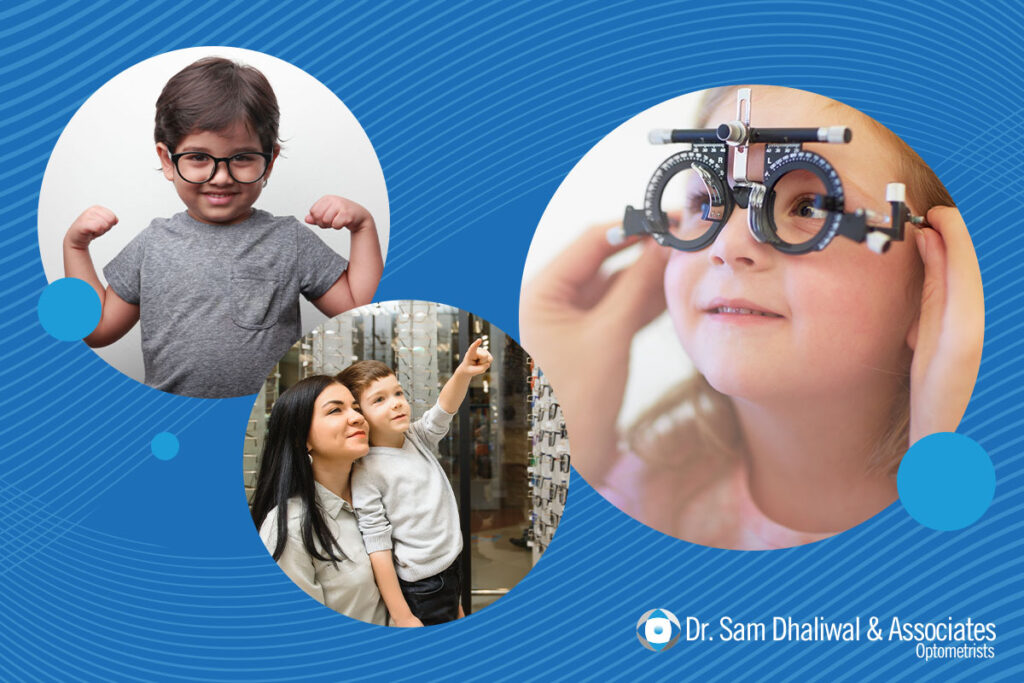Children should have their eyes examined at 6 months old. At that time, the optometrist will let you know what eye conditions to watch for and will tell you when to bring your child back. Normally this will be every year and possibly even an additional exam when they start school.
Alberta Health Care covers the cost of eye examinations for children under 18.
If there are any signs that there may be a vision problem or if the child has certain risk factors (such as developmental delays, premature birth, crossed or lazy eyes,) more frequent exams may be recommended.
To assess whether your baby’s vision is following important milestones, exams at 6-12 months can determine their development. Even though your child may not be able to talk, the doctor will use the following tests to assess their vision:
- Tests of pupil responses evaluate whether the eye’s pupil opens and closes properly in the presence or absence of light.
- “Fixate and follow” testing determines whether your baby’s eyes are able to fixate on and follow an object such as a light as it moves. (Infants should be able to fixate on an object soon after birth and follow an object by the time they are 3 months old.
Experts say that 80% of what children learn in school is presented visually, ensuring your child has a good vision is essential in helping them reach their full potential.
Learn more about optometrist clinics that provide eye examinations for children and infants.
The older children get, the more vision deficiency can affect their learning abilities. A recent CAO study shows that 10% of preschoolers have a vision deficiency and that number increases to 25% from kindergarten to grade 6.
Children can also be misdiagnosed with a learning or behavioural disability, due to issues like difficulties with focusing on schoolwork. Up to 60% of children who are diagnosed with learning disabilities actually suffer from undetected vision problems.
Watch for these issues in conjunction with school problems:
- Headaches or eye strain
- Blurry or double vision
- Excessive blinking or rubbing eyes
- Poor hand-eye coordination
- Crossed eyes or eyes that seem to work independently
- Turning or tilting head to use one eye only
- Having to sit closer to the board or keeping pages close to read

